The Western Ghats & Mumbai, 2011
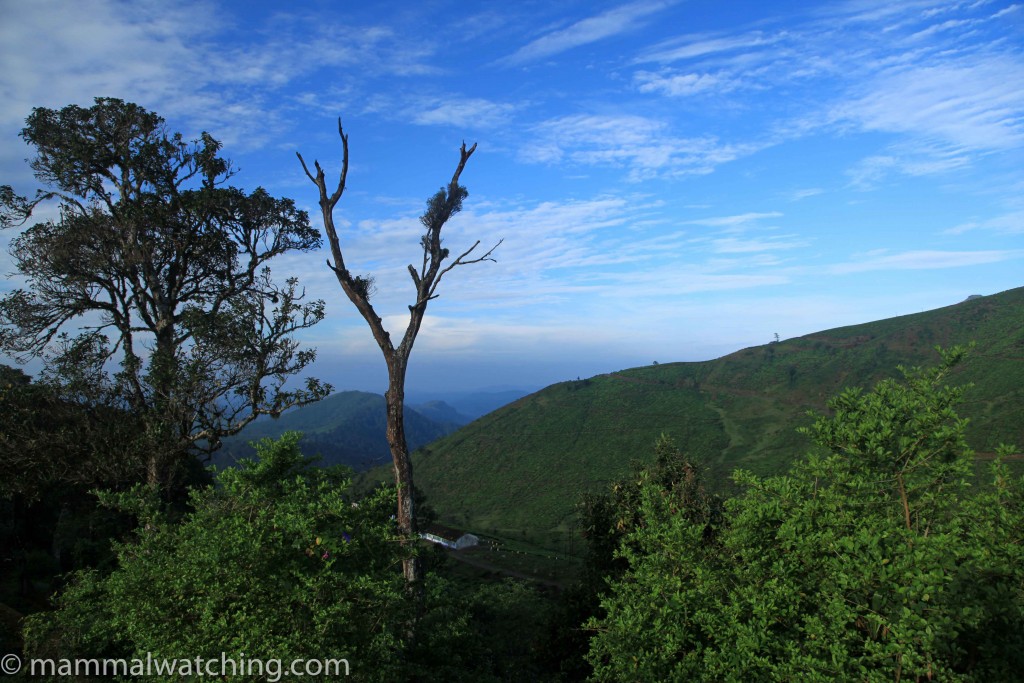
The Western Ghats
I’d been to the centre, west and east of India but never to the south, which has a set of nice endemic species including Lion-tailed Macaques and Nilgiri Tahrs. So the Western Ghats was an obvious choice of destination when I was planning how to spend my three months long service leave at the end of 2011 (long service leave is one of the Australian public service’s finest contributions to modern civilization).
I organised this trip, again, with with Anil at North West Safaris, who had arranged my 2007 trip through Gujurat and 2008 trip in Assam. As always Anil did a great job choosing the best itinerary, finding wildlife-friendly places to say and in particular using his network to arrange for Sasi to accompany me (see the Kerala intro below). Ramesh Nair from Explore helped with the local bookings too.
This was my favourite trip to India to date. Kerala is beautiful and while the towns are still chaotically Indian, it is a little bit less frenetic than other parts of the country. The food was spectacular and, compared to the other places I have visited in the country, the parks were more relaxed and better set up for a naturalist wanting to look for things other than just Tigers and elephants (though I am sure Sasi’s presence helped with this too)..
Mumbai
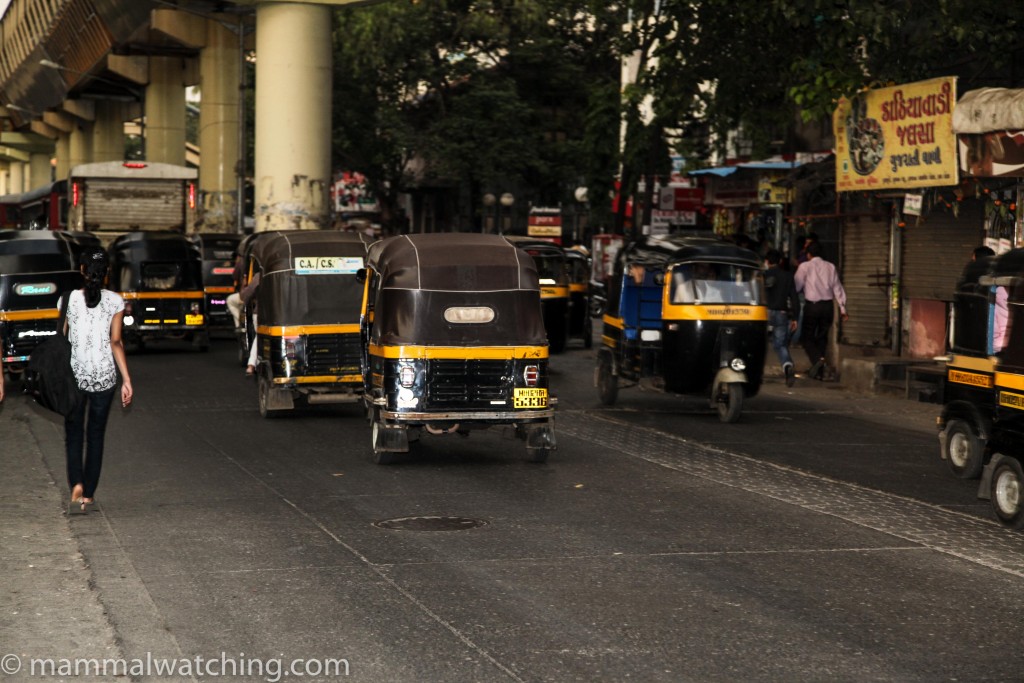
Mumbai is probably not the best gateway to Kerala, but I wanted to visit two sets of caves – Elephanta and Kanheri – that are close to the city. These caves are well know tourist sites and they both comprise a set of temples. But, more importantly, they are also known roosts for several species of bats I wanted to see. Vivek Menon’s Field Guide to Indian Mammals recommends Elephanta Caves as the easiest place to see both Schneider’s and Fulvous Leaf-nosed Bats, and Kanheri as the best place for Fulvous Fruit Bats and Greater False Vampires.
Elephanta Caves
Elephanta Caves are a world heritage site and tourist boats start chugging out there each morning at 9 a.m. from in front of the Gate of India. It ought to take about an hour to get there though it took us 90 minutes on the way out, mainly because the skipper couldn’t steer in a straight line.
There are at least five caves on the island, all next to each other along the main path through the heritage site. The first cave has the most tourist activity. I saw two clusters of Asiatic Greater Yellow House Bats in here, in sink holes in the roof.
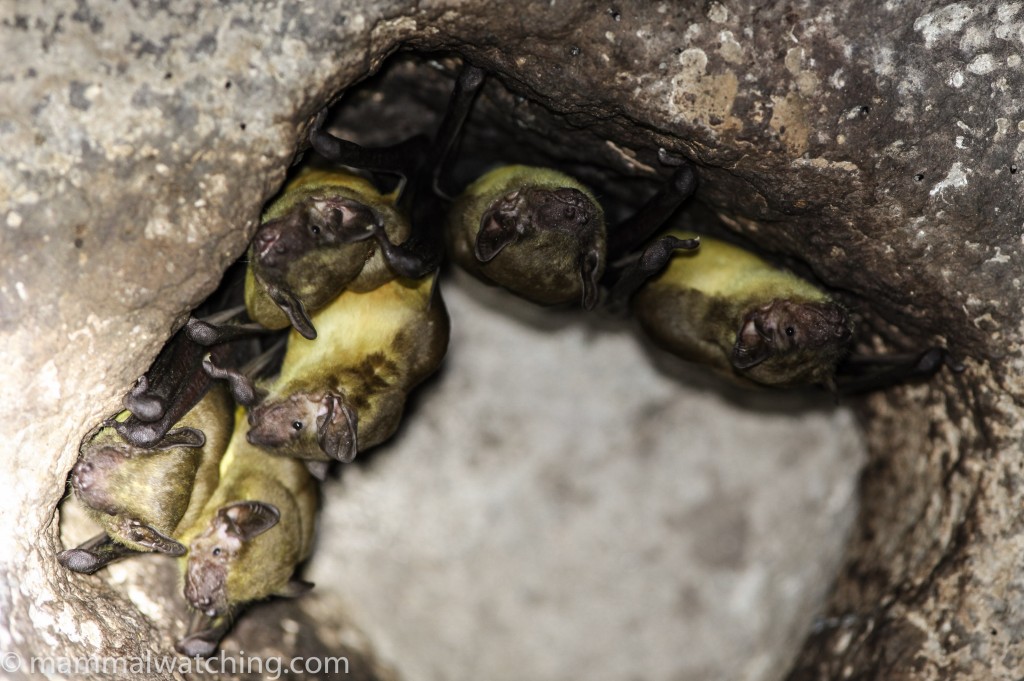
Asiatic Greater Yellow House Bats, Scotophilus heathi
There was also a mixed colony of both Schneider’s and my first Fulvous Roundleaf Bats above the main statue at the back of the cave. I managed to miss these first time I entered the cave somehow.
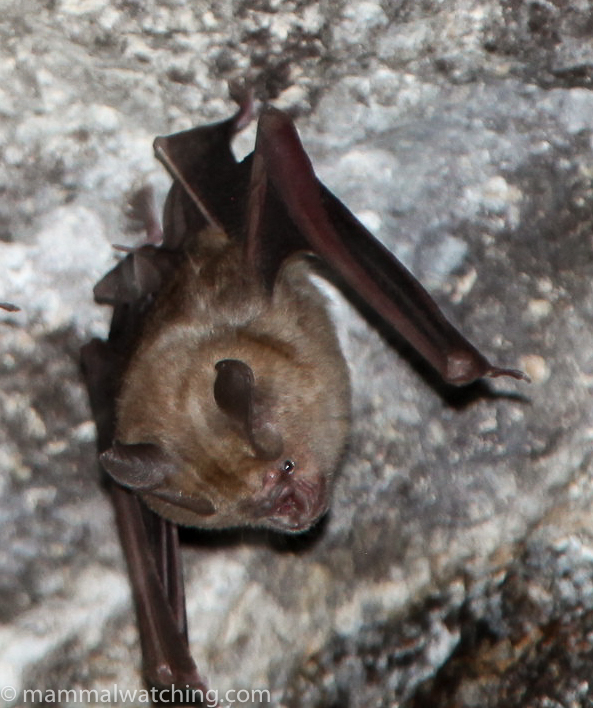
Schneider’s Roundleaf Bat, Hipposideros speoris
It was difficult to work out that there were in fact two separate species other than from examining the nose leaves in the photos: speoris has three supplementary leaflets, while fulvus has none. They were a bit too high up for decent photographs plus there was a perpetual queue of tourists wanting to be photographed in front of the statue too, which limited photographic time.
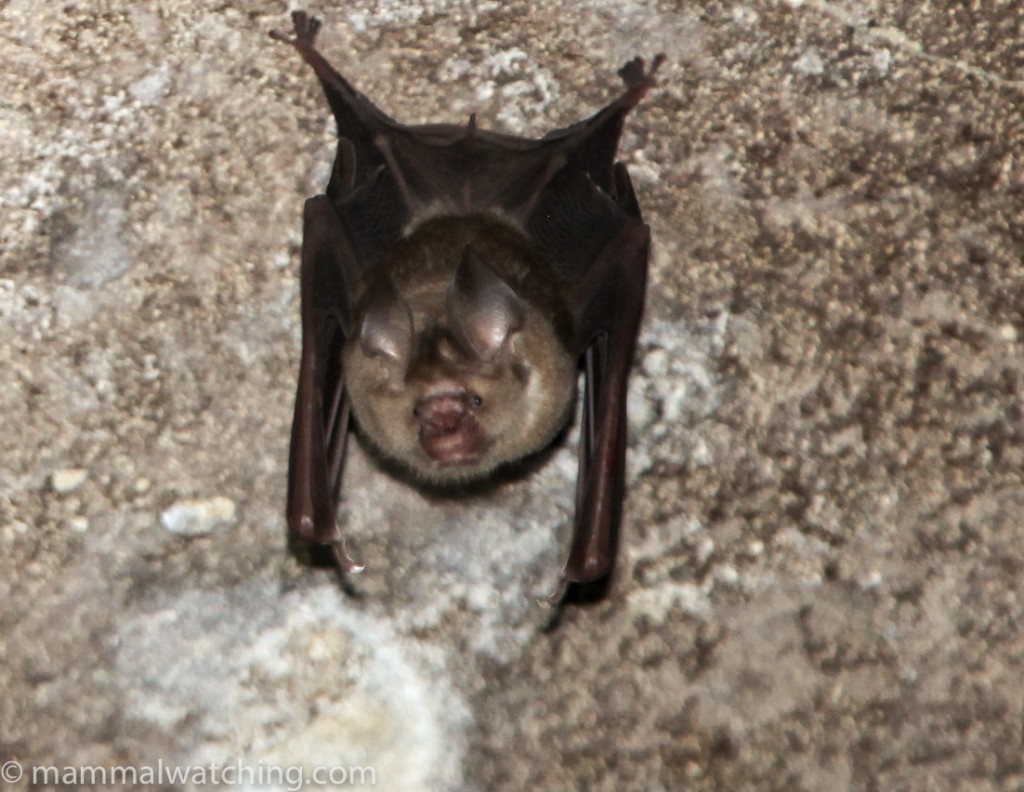
Fulvous Roundleaf Bat, Hipposideros fulvus
I couldn’t find any bats in the smaller No 2, 3 and 4 caves, but in the 5th cave, in a low small chamber on the left hand side as you enter, were a group of my first Greater False Vampire Bats. A great species.
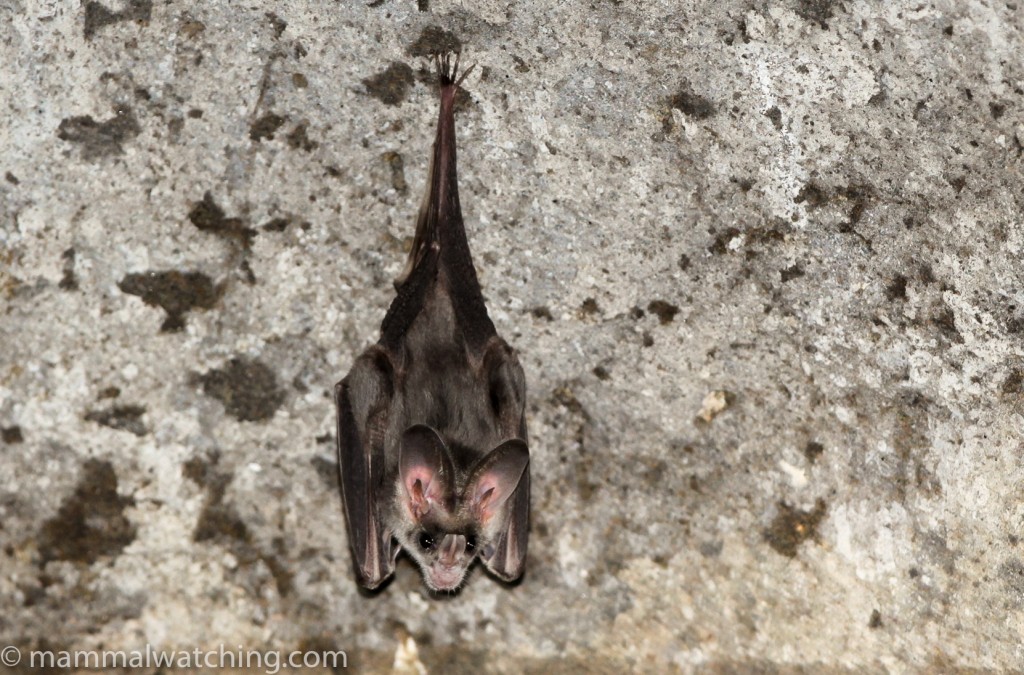
Greater False Vampire Bat, Lyroderma lyra
I didn’t explore the rest of the island. Indeed I am not sure it is easy or even permitted to explore it as everything is pretty much set up around the five caves. Bonnet Macaques are very common and hang around the caves looking for handouts and causing trouble.
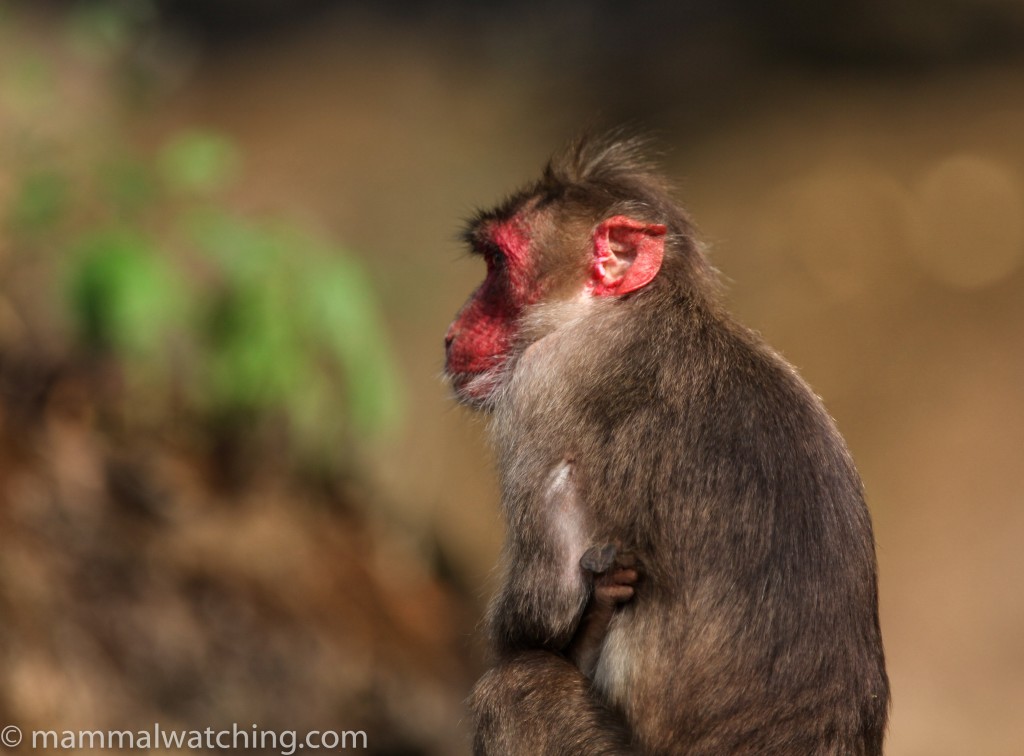
Bonnet Macaque Macaca radiata
I headed back to Mumbai on the first boat at 12.30 p.m. Two hours or so on the island is just about enough time to look in all the caves reasonably well.
Kanheri Caves
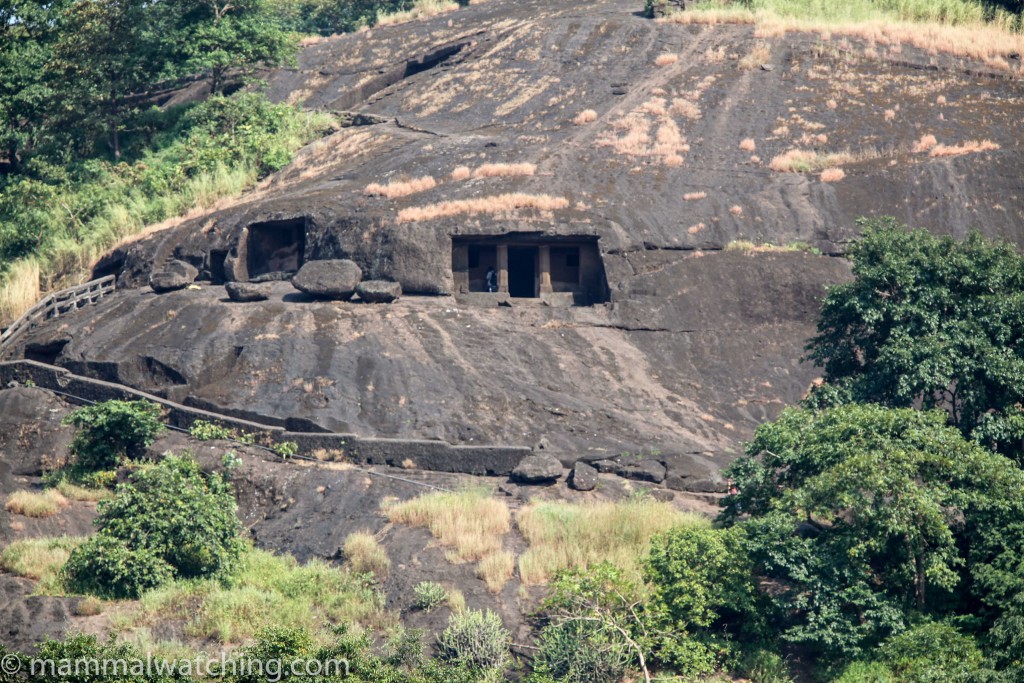
The boat journey back was quicker (and straighter). I drove straight to the Sanjay Gandhi National Park, an hour or so away. This is part national park, part safari park and also home to the Kanheri Caves. It was particularly hot and humid around the caves. And when I discovered there are 109 caves I decided to take a local guide who claimed to have seen bats in a few of the caves and knew which ones. So we wandered from cave to cave, probably visiting about half of them. Most of the ‘caves’ are small chambers cut into the cliff face and very similar in size and layout.
Cave No. 1 stank of bats but I couldn’t see or hear any. I’m not sure if it is a night roost, a seasonal thing or that there were in fact bats in the upper chamber which I couldn’t see into. The upper chamber is about 10 metres above the cave floor. Now I could have climbed a makeshift ladder to have a look. It had been left there by the locals, and was just two pieces of bamboo lashed together with various twigs sticking off that served as rungs. After several near death moments in Asian bat caves I decided not to risk it, and then immediately regretted how unadventurous I had become. I consoled myself with the thought that even if Fulvous Fruit Bats were using the cave from time to time I would have heard them if they had been in there.
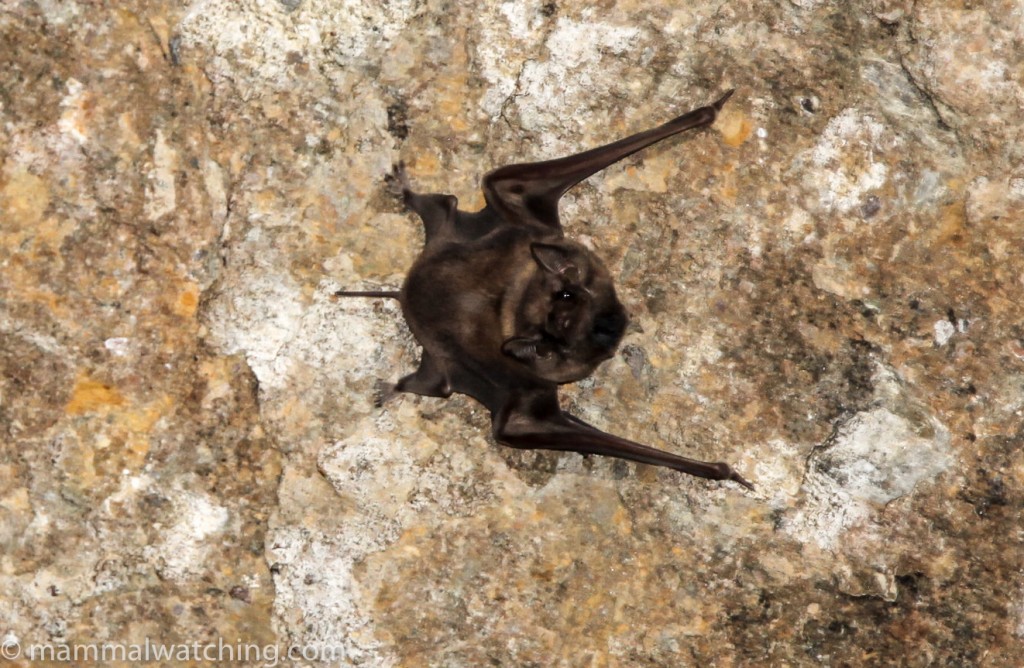
Black-bearded Tomb Bat, Taphozous melanopogon
In Cave No. 3 – which is more of a temple – there were a few very flighty tomb bats above the corridor around the perimeter. I saw at least one Black-throated Tomb Bats Taphozous melanopogon (which have been recorded here before according to this very useful report on the status of all South Asia’s bats). There may possibly have also been some T. longimanus in here but I couldn’t get a good look or photo at all of them.
I didn’t see sight nor sound of bats in any of the other 40 or so caves I wandered around. So Kanheri was a little disappointing and perhaps there are more vats there at different times of the year. A guide I was chatting too at Elephanta said there were lots of bats in Kanheri, so many in fact she’d been scared when she visited, so it might be worth visiting during another season.
In the forest around the caves we saw many Bonnet Macaques, a few Rhesus Macaques, a Grey Langur (formerly Southern Plains but now Black-footed) and I got a brief flash of a striped squirrel that I think was a Jungle-Striped Squirrel (Funambulus tristriatus).
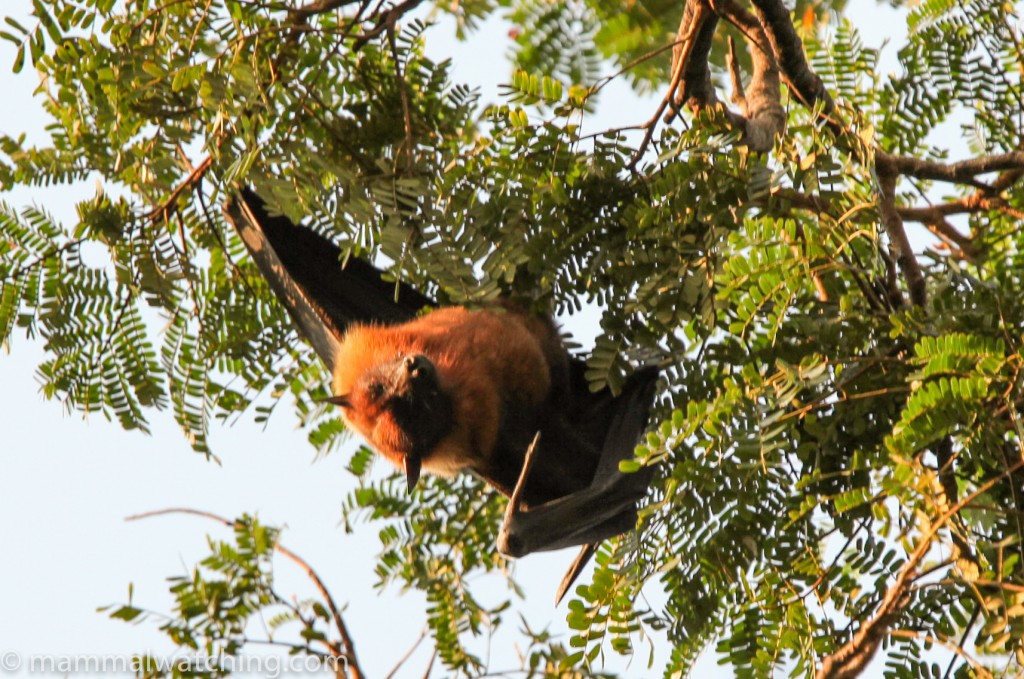
Indian Flying Fox, Pteropus medius
Back in Mumbai I saw a roost of Indian Flying Foxes and many more flying around the city at dusk. Some smaller fruit bats were feeding near Homian Circle Gardens. I saw them flying from the trees while we were stuck in traffic so didn’t get a good look but they were smaller than flying foxes but too big to be anything but Fulvous Fruit Bats (Leschenault’s Rousette) I believe.
Kerala
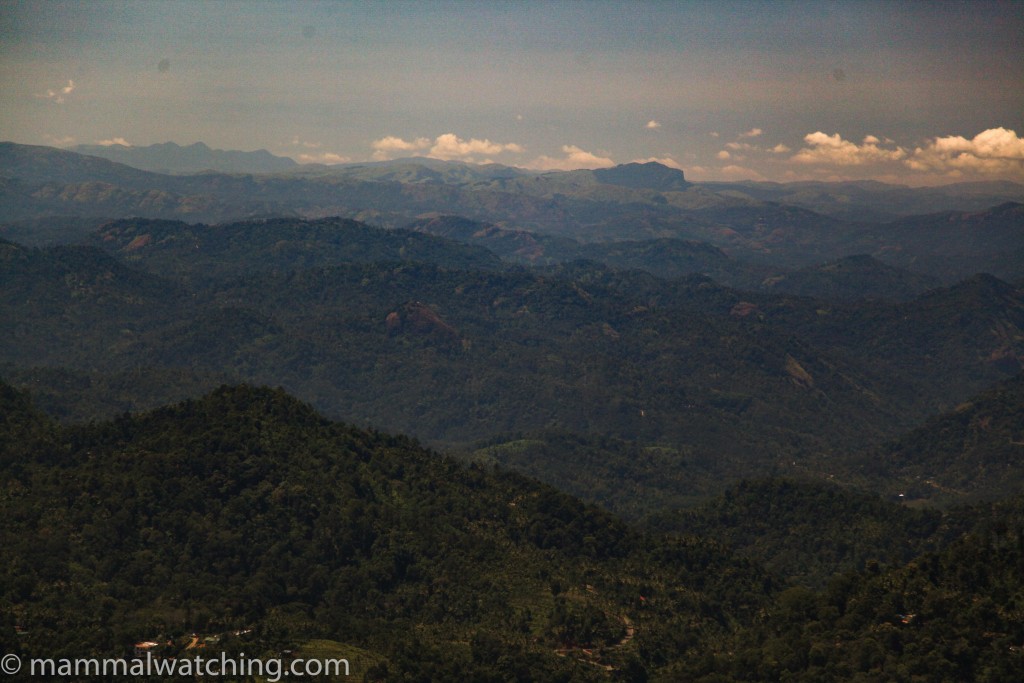
It is a two hour flight from Mumbai to Kochi and the landscape coming into land is as lush as anything I’ve seen. I was met at the airport by a driver and Sasindra Babu, a conservation campaigner who had taken leave from his job in the Kerala Forest and Wildlife Department to join me after Anil had contacted him. Sasi coordinates eco tourism and development activity in the Parambikulam Tiger Reserve and has campaigned to involve the local community in conservation and ensure they see some rewards. It appears to have worked. If you would like to visit Kerala you could contact Sasi to see if he could help. He’s a great guide, fixer and companion.
Thatekkad Bird Sanctuary
Two hours later we were at the pleasant Soma Bird Lagoon Hotel near the Thatekkad Bird Sanctuary. The hotel was nice but the area was quite disturbed: the small sanctuary was set up primarily to protect Ceylon Frogmouths.
We headed to the sanctuary for a late afternoon/night walk, all of which required special permission of course, in true Indian style. Sasi got the permission but by the time a local guide had arrived it was dark.
We decided to focus on looking for Travancore Flying Squirrels which are apparently not so easy to find in the Western Ghats but were quite common in Thatekkad. We didn’t see or hear anything inside the sanctuary so headed to the edge of a cocoa plantation nearby where we heard several calling – a mournful whistle – but couldn’t see them. Other interesting species in the sanctuary include Malabar Spiny Dormice and Indian Pangolins. The former can probably only likely be seen by trapping. The latter sometimes get stuck in nets that farmers put out to protect their fruit.
Pampadum Shola and Top Station
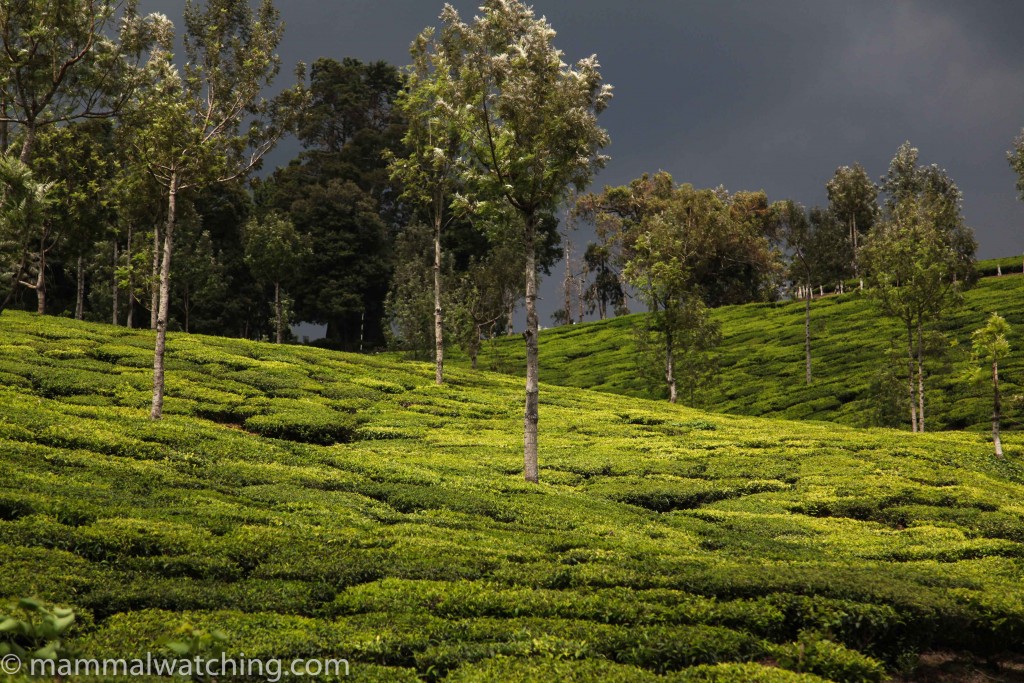
Tea plantations
The next morning we set off on the slow four hour climb up to Top Station and Pampadum Shola National Park. There were a few Bonnet Macaques en route and lots of gorgeous scenery.
After transferring into India’s oldest Mahindra jeep we bumped up the last 8 kms of track to spend the next two nights at the lovely Camp Noyal, a set of forest bungalows nestled at over 2000 metres amid tea plantations. It was something straight from the Raj.
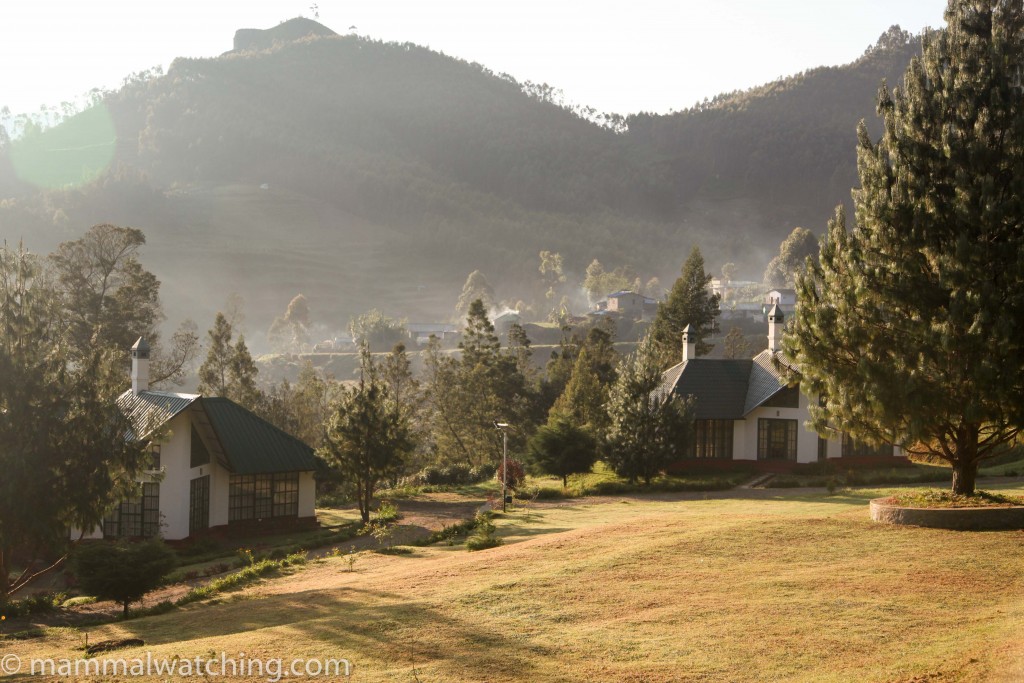
Camp Noyal
The high altitude rainforest up here is called shola and there is precious little left: first it was cleared for the tea plantations, and now for short-sighted eucalypt plantations which are big business. Unfortunately the Australian government have been helping fund the work.
A two hour hike up and into the nearest bit of shola to camp was uneventful other that for the leeches. The forest was largely impenetrable, and what might have one been a trail was now overgrown with head high stinging plants but we did hear a Grizzled (Sri Lankan) Giant Squirrel but couldn’t see it.
We arranged with the camp for a night safari and headed off at 10 p.m. in India’s second oldest Mahindra. The three hour drive through patches of shola was surprisingly good: a Black-naped Hare, several groups of Sambar, nine Gaur (on the golf course!) and best of all a Brown Palm Civet, a species I had thought we would struggle to find. The civet was unfortunately quite high up and distant and we only saw it for a few seconds while it was feeding in a tall tree.
I set a bunch of Elliott traps around the hotel and next morning caught four shrews: three were of the almost black Nilgri Highland Shrews (Suncus niger now split from S. montanus).
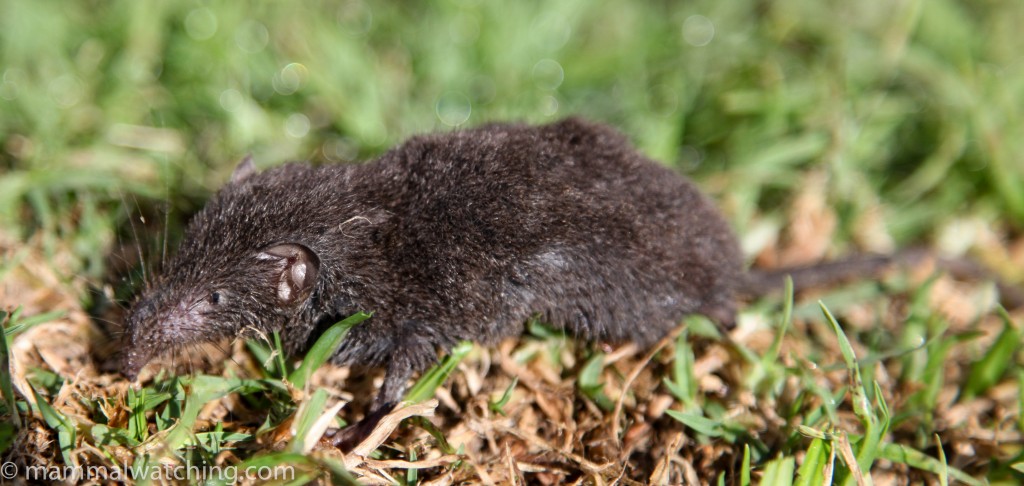
Nilgri Highland Shrew, Suncus niger
I also caught a couple of big rats that were probably Rattus rattus. It would be nice to get some more information on the small mammals in the area.
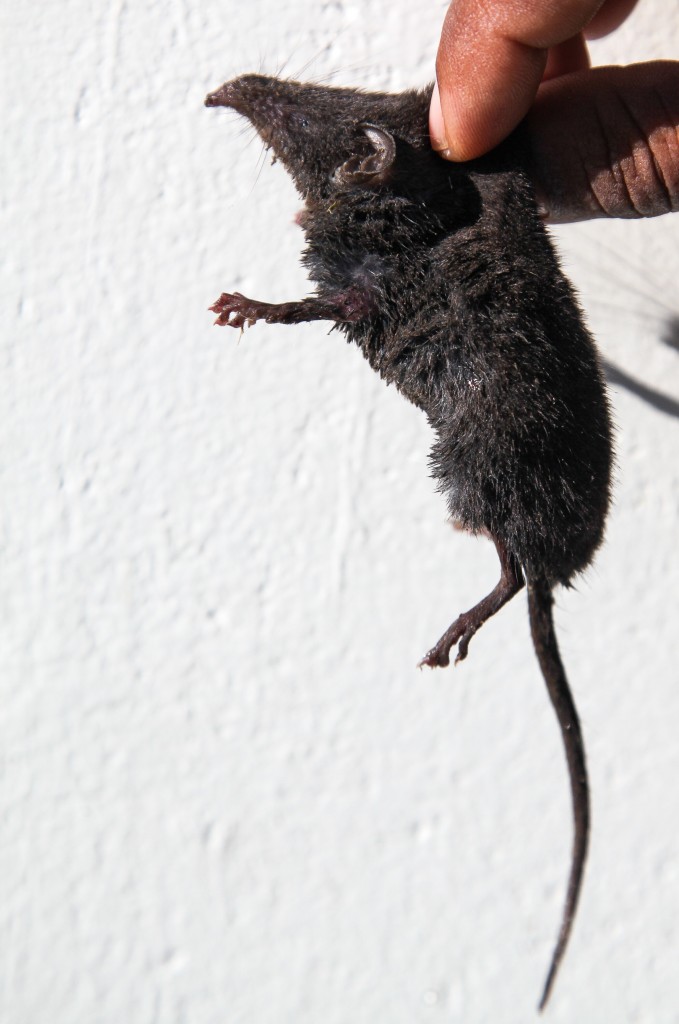
Nilgri Highland Shrew, Suncus niger.
We spent the rest of the day hiking around nearby Pampadum Shola National Park. I was here mainly to try for the beautiful Nilgiri Marten which I thought would be very hard to see so I didn’t hold out much hope. They are spotted occasionally on the road (even close to the town of Munnar), or in the forest, but they are a rare sighting indeed. Three hours on a forest track from the gate – and back along the road – to and from the national park’s log camp in the morning, and another three hours down the road to Watavada in the afternoon did not produce a marten, though the guide we were with pointed to several scats that he said were from this species. The leeches were as bad a they come.
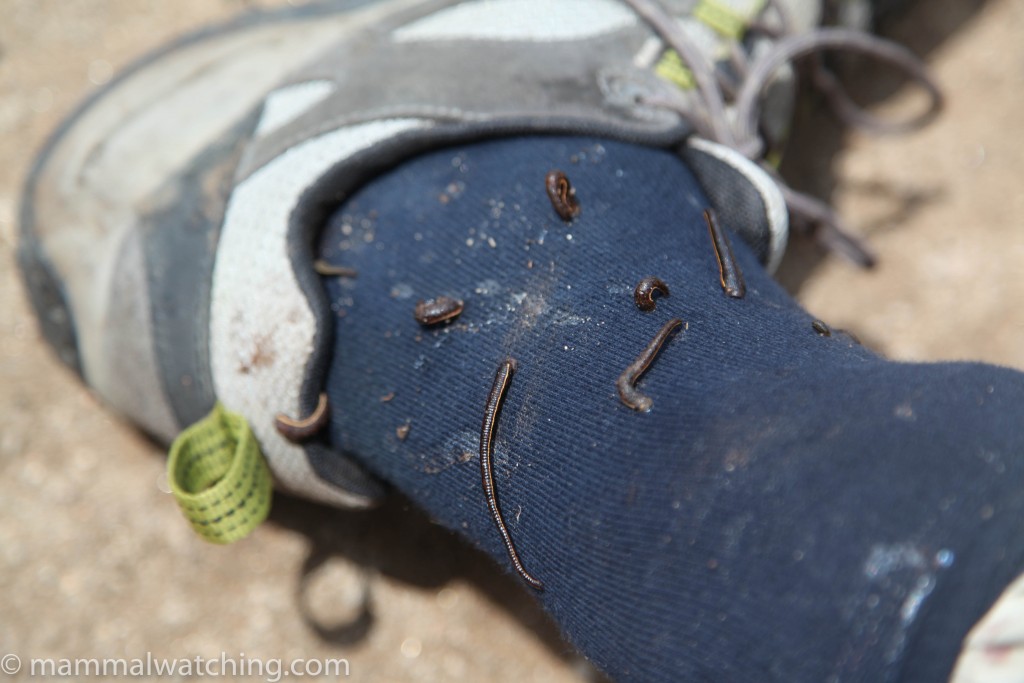
Leech-tastic
We did see a few Nilgiri Langurs (and heard many more) as well as at least 10 Indian Giant Squirrels (and heard many more). I’ve never seen a more beautiful squirrel. In fact this might be the most attractively marked mammal going. We also saw a couple of troops of Bonnet Macaques.
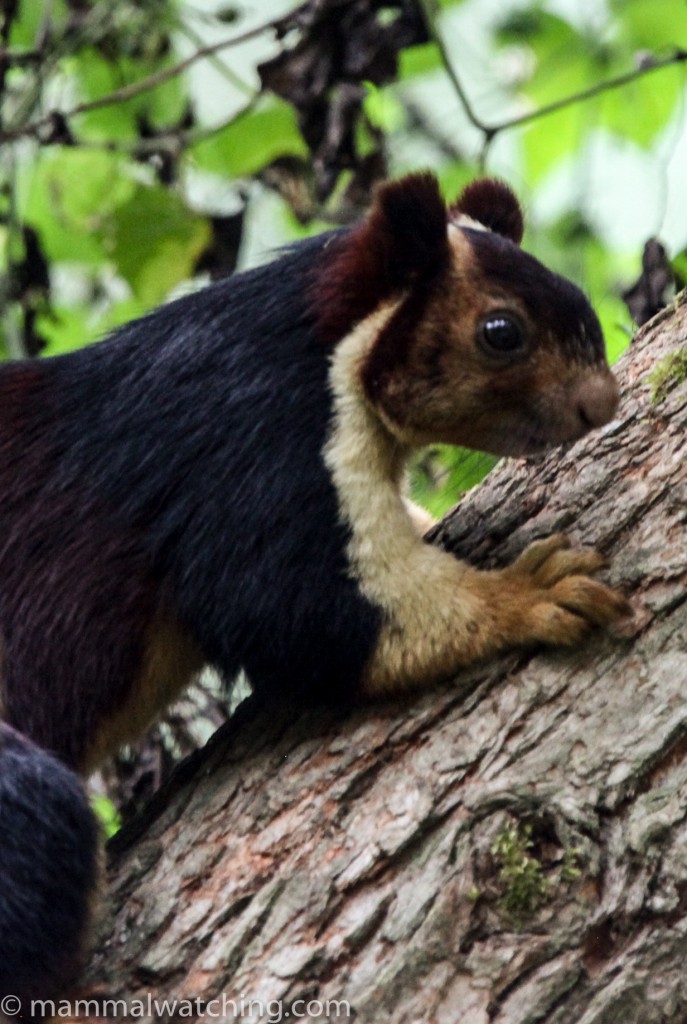
Indian Giant Squirrel, Ratufa indica
The next morning we added a very aggressive House Shrew and a House Mouse to the list from the traps, along with a couple more Nilgri Highland Shrews and another R.rattus. And then we set off for Eravikulam.
Eravikulam National Park
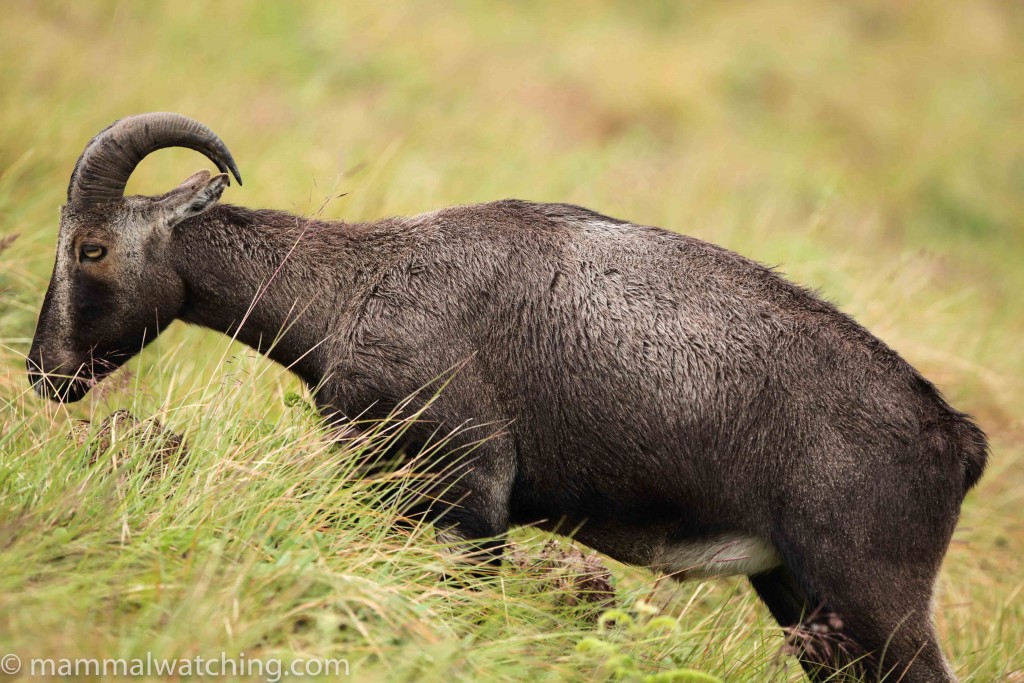
Nilgiri Tahr, Hemitragus hylocrius
I’m sure Eravikulam, at the top of a particularly lush mountain, is stunning on a good day. But it was hard to tell when I was there. The rain was bucketing down when we arrived though it – if not the clouds – cleared after we took the shuttle bus to the summit. Nilgiri Tahrs are pretty much guaranteed here and it took us an unusually long 20 minutes to find our first animals. But once the rain stopped several groups appeared. It was heaving with tourists but that didn’t seem to worry the animals. There were more Bonnet Macaques here too, and Nilgiri Langurs along the highway just out of town.
Chinnar Wildlife Sanctuary
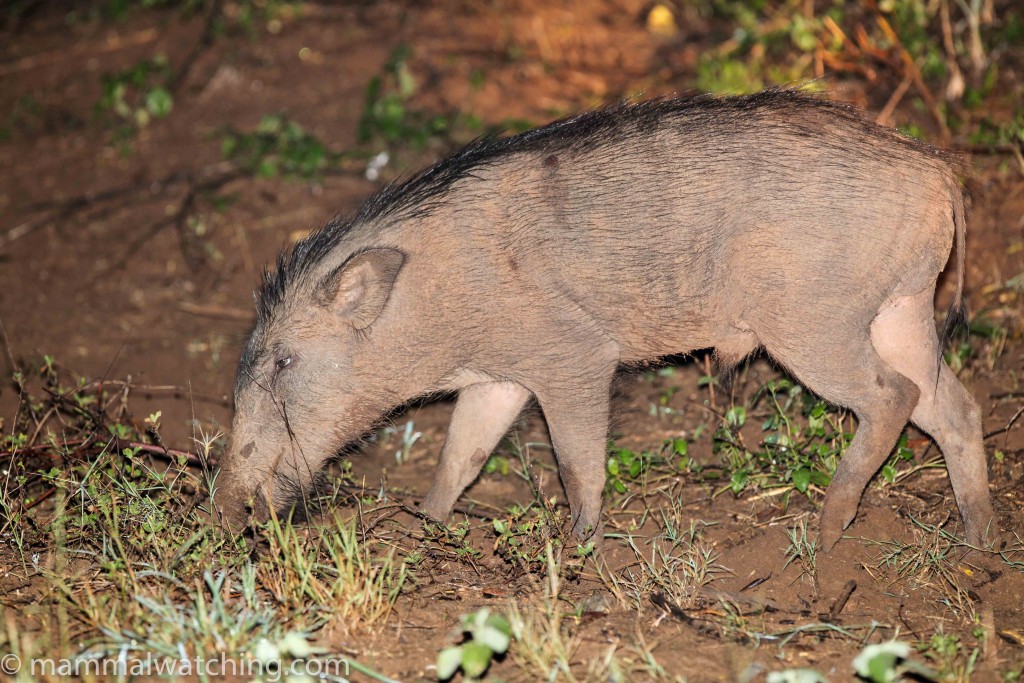
Eurasian Wild Boar, Sus scrofa
Chinnar is another 90 minutes from Eravikulam. It is up at about 800 metres and is mainly dry Indian forest, reminiscent of Bandhavgarh, with some evergreen forest along the river. It was set up primarily to protect the Grizzled Giant Squirrel.
We arrived quite late and stayed in the forest bungalow on the border of Chinnar and Anamalai Tiger Reserve. Great location. Shitty building. Literally: my room’s only decoration was rat poo. And it was about 10C warmer inside the house than outside which was oppressive. It would have been hideous had it not been raining that afternoon.
The forest department provided a chef who cooked up a great meal and we headed out at about 11 p.m. to spotlight along the road through the park (this sort of activity is forbidden further north in India but seems to be tolerated down south).
In a couple of hours we saw Chital, Sambar, Northern Red Muntjac, Wild Boar, Black-naped Hares and two groups of Gaur. Mouse-deer are seen from time to time along the road though we didn’t find any.
The next morning it was easy to find Grizzled Giant Squirrels along the river near the bungalow, and Jungle Striped Squirrels on the other side of the road.
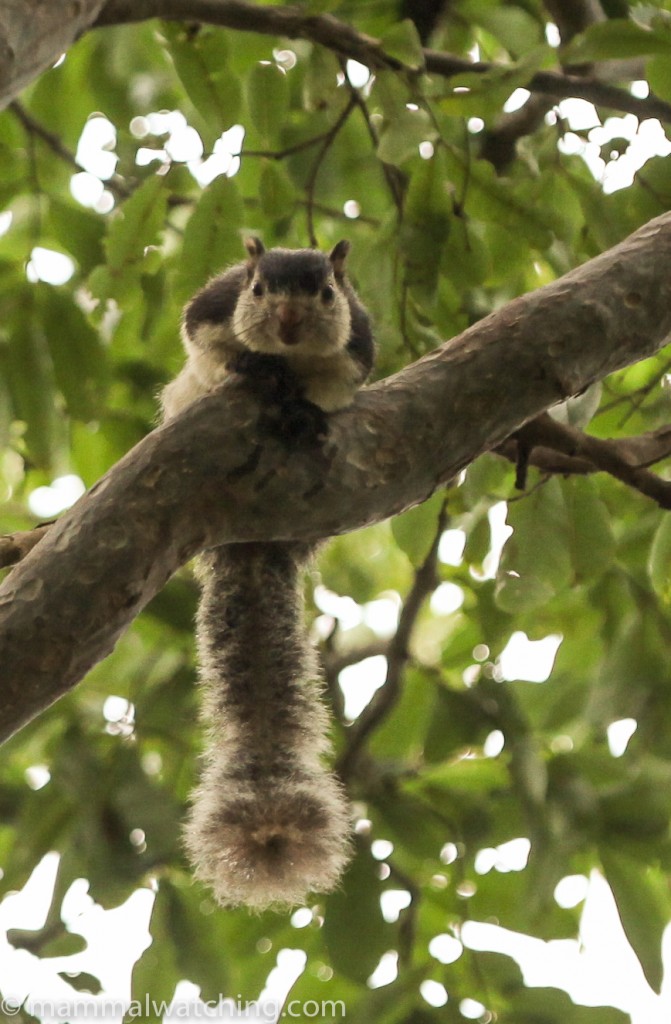
Grizzled (Sri Lankan) Giant Squirrel, Ratufa macroura
We spent three hours after breakfast walking around Chambakad Village and back through the bush to the house. My main aim was the Dusky Striped Squirrel which I was told was quite common in Tamarind and Banyan trees though this contradicts the IUCN site which says they are extremely rare and restricted to riparian forest (reed beds in particular) so I had my doubts that the guide and I were talking about the same species. But he knew we weren’t after Jungle Striped Squirrels so I don’t know what he was looking for if it wasn’t a Dusky Striped Squirrel? A Treeshrew perhaps? Much to the village guide’s surprise we couldn’t find one. How I wish he hadn’t uttered at the start of the morning that sure fire kiss of death: that “we were sure to see one”.
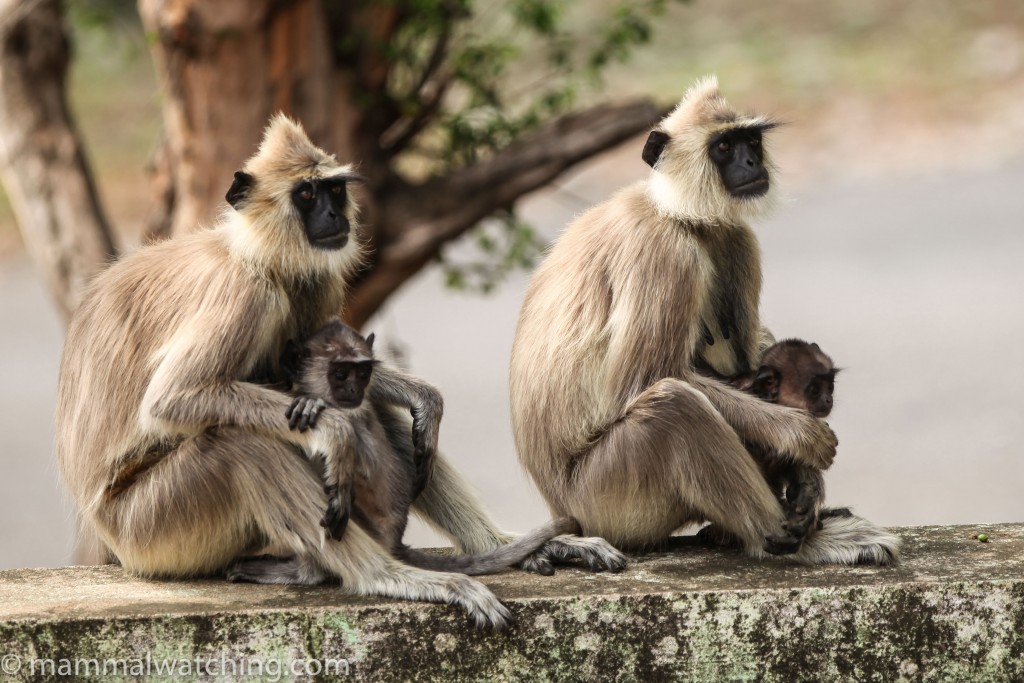
Tufted Gray Langur, Semnopithecus priam
There was plenty of evidence of Indian Elephants in the area. Slender Lorises and Indian Pangolins are around too and I was shown pangolin diggings. Bonnet Macaques and Tufted Grey Langurs were all around the house and park gate.
Valparai (Tamil Nadu)
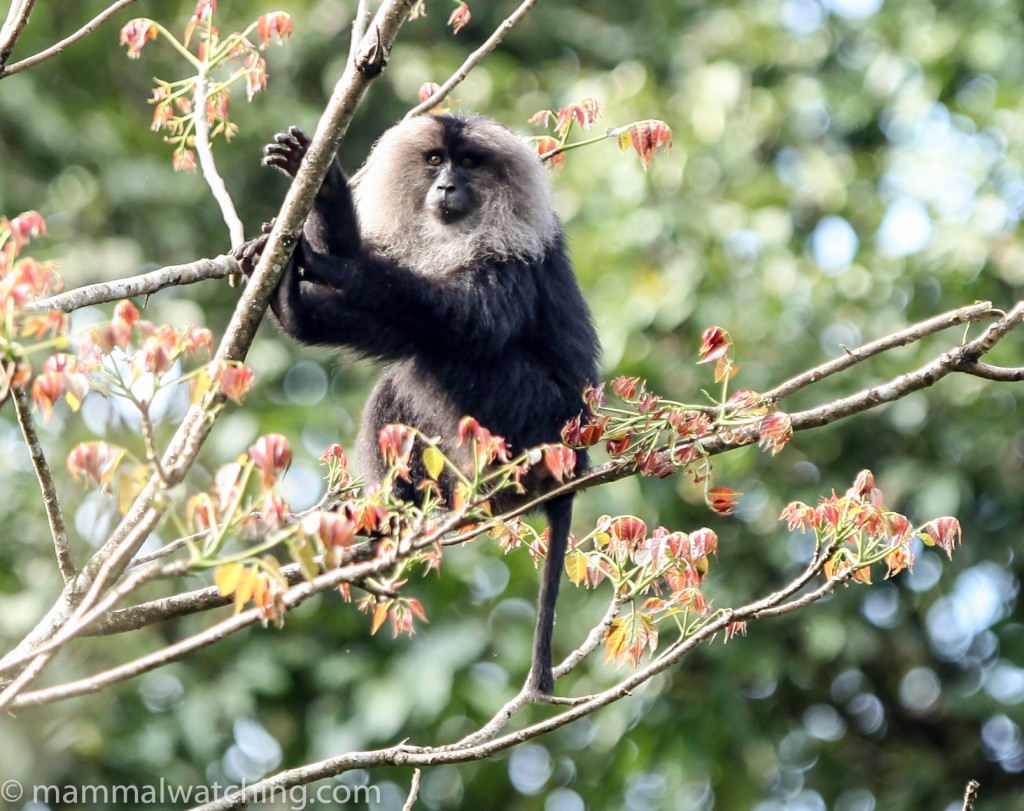
Lion-tailed Macaque, Macaca silenu
Valparai is a three hour drive from Chinnar, half of which is in Tamil Nadu a state where the drivers appear to honk their horns even more often than the Keralites. It is an interesting area: primarily tree plantations with a mosaic of remnant shola forest in between that provides habitat for many large animals. Animals that are quite easy to see because they are often crossing from forest patch to forest patch. It is also the best place to look for the endangered Lion-tailed Macaques which can apparently take a bit of finding within the national parks they inhabit.
We stayed at the All Season Guest House run by a tea plantation: we had our own bungalow that came complete with a cook. The manager was interested in wildlife and arranged for a local to help me find the animals.
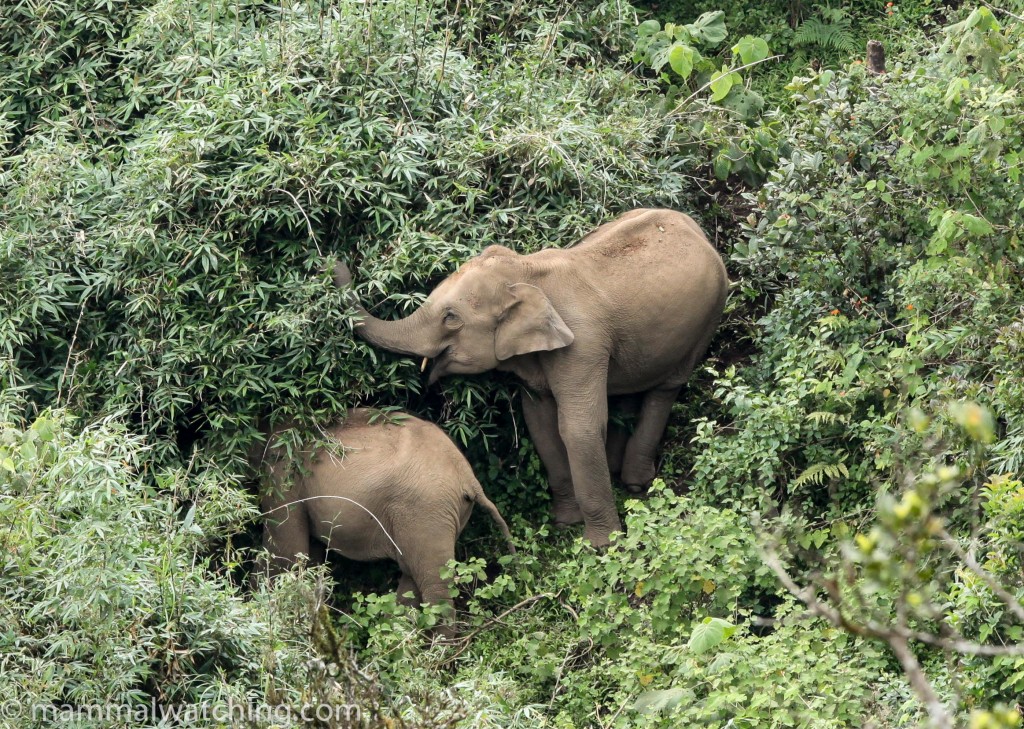
Asian Elephant, Elephas maximus
It began to rain just after we arrived so we put out some traps in the hotel garden and took the rest of the night off because of the weather. I was told it is often very misty in the afternoon and evenings which makes night drives something of a challenge, especially as there is a risk of running into a herd of elephants on a narrow mountain pass.
Early the next morning we visited nearby Puthu Thoottam village where a group of 50 or so Lion-tailed Macaques were waiting for us. They generally turn up early in the morning to feed before heading back into the forest. Really great animals.
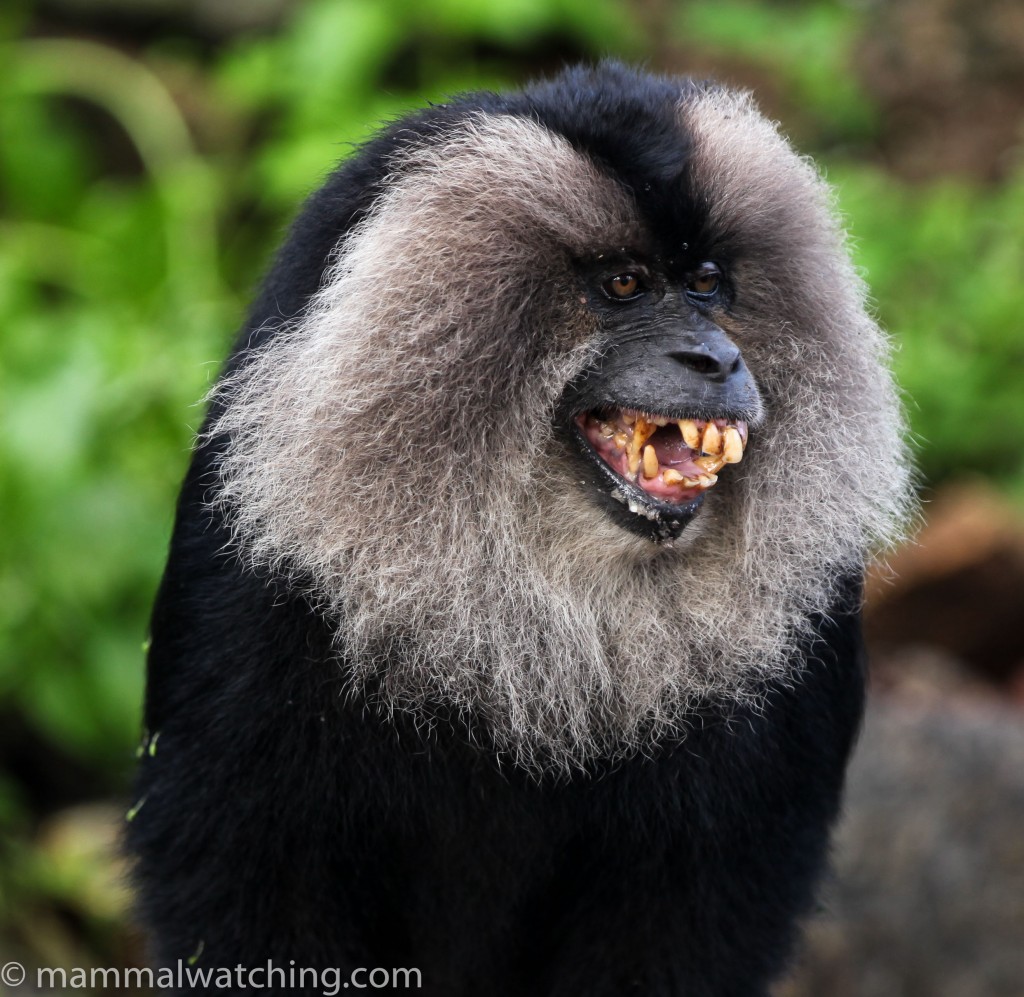
Lion-tailed Macaque, Macaca silenu
We also saw Nilgiri Langurs along the main road and a couple of Malabar Giant Squirrels. Back at the guest house there was a Jungle Striped Squirrel running around, and in the traps we caught another Rattus rattus. At least I think so: the cream bellied animals here seem way too pretty to me to be this species. I also caught two mice. And – thanks to advice from Vivek Menon – with their tail which was a little shorter than then 8 cm body, they were both endemic Bonhote’s Mouse (Mus famulus).
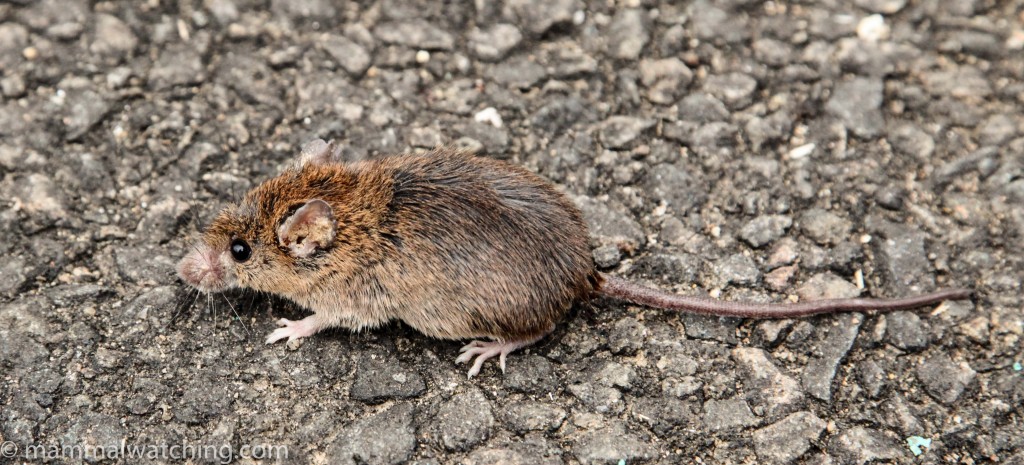
Bonhote’s Mouse, Mus famulus
The hotel manager summoned me to see a group of elephants feeding in a nearby shola patch later that morning and we saw a Wild Boar in the same area. We looked for Sloth Bears during a late afternoon game drive that are apparently common but couldn’t find any. We did see a couple of Gaur though and more elephants. A night drive was pretty quiet, with just a Sambar, a few more Gaur and a Black-naped Hare all close to the hotel.
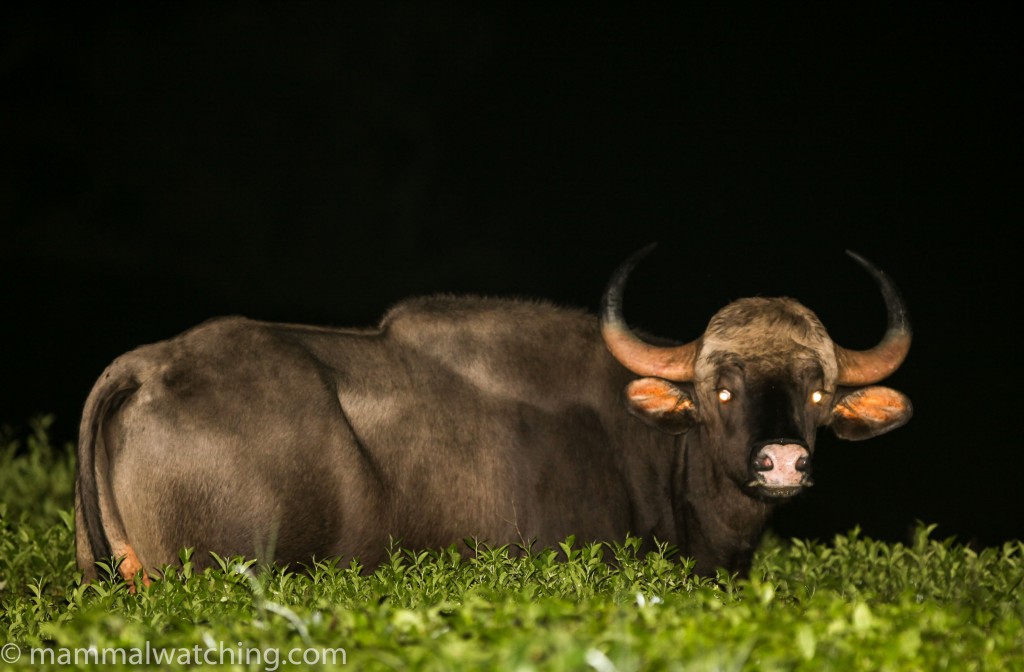
Gaur, Bos gaurus
In the morning something – presumably a Sloth Bear – had trashed a few of my traps set around the guest house. The only animals inside were a Jungle Striped Squirrel and another Bonhote’s Mouse. Our final early morning drive added a rather dark Grey Mongoose to the trip list, along with a Ruddy Mongoose and Bonnet Macaques about 30 minutes down the mountain towards Anamalai as we headed to Parambikulam.
A great spot and one that ought to be added to the ecotour circuit.
Parambikulam Tiger Reserve
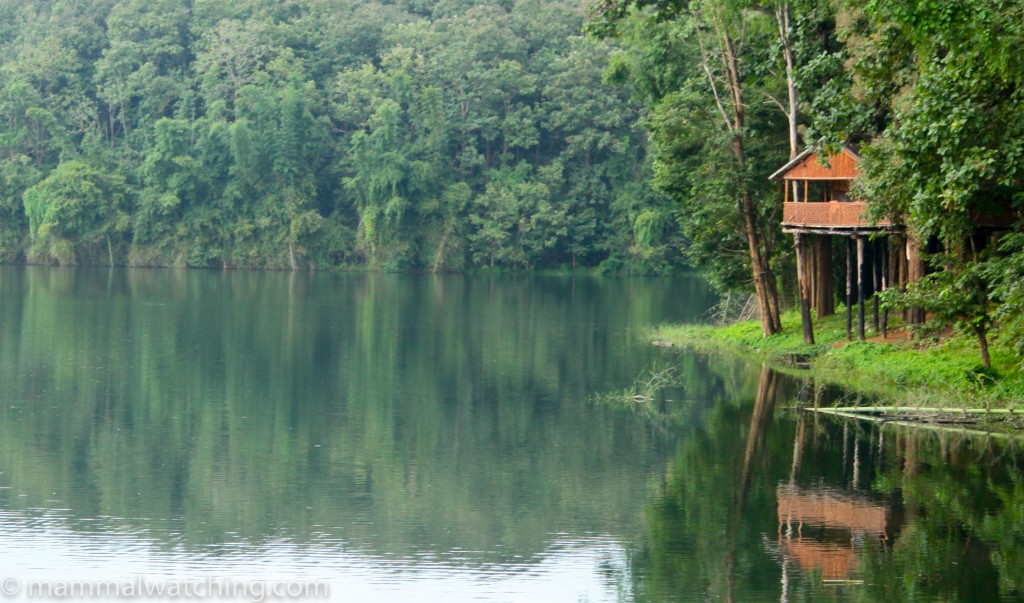
Tree Top Cabin
Parambikulam, back in Kerala, is three hours from Valparai. Sasi works here, and has campaigned over the past 14 years to ensure the local community see the benefit of ecotourism. It is 650 square kilometres of evergreen forest and Teak plantation and borders the Anamalai Tiger Reserve.
There were a few Nilgiri Langurs, some Grey Langurs (though I am not sure what species) and a few hybrids hanging around the Anamalai Gate 4kms before Parambikulam. Sasi arranged for me to stay in a fabulous tree top cabin inside the park. It was blissfully quiet for an Indian park: Parambikulam is closed to day visitor’s vehicles during the day and to all vehicles at night. A few safari minibuses transport day visitors around which keeps disturbance at a minimum.
During a late afternoon drive we saw stacks of Wild Boar and Chital Deer, all extremely habituated, several nice groups of Gaur, Nilgiri Langurs and a few Sambar. We missed a herd of elephants by a few minutes.
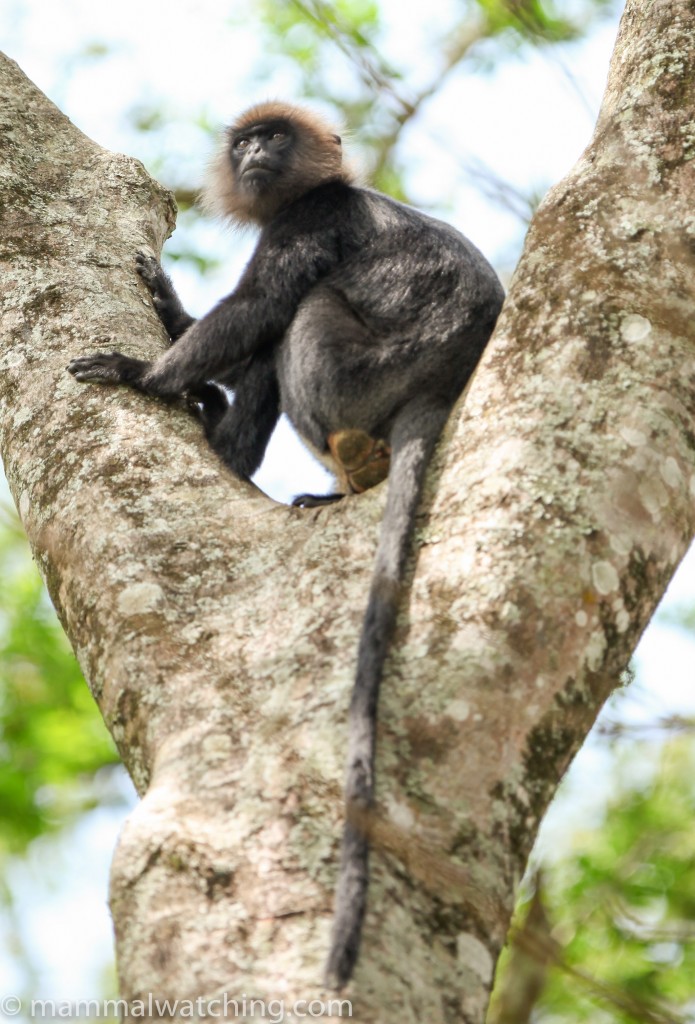
Nilgiri Langur (Hooded Leaf Monkey), Trachypithecus johnii
After a wonderful night of solitude in the cabin I set off early to check for Sloth Bears in an abandoned building 500m off of the road. It is an active den. Full of proof that bears shit not just in the woods but in old houses too. But the bears must have been away for the weekend. There were a colony of horseshoe bats inside: I think Rufous Horseshoe Bats (Rhinolophus rouxii) though at first I thought there were two species. Half were bright orange and the others, much more clustered together, were grey. But looking at the photos they appear all to be R. rouxii and indeed a couple of individuals appeared to be turning from grey to orange, or vice versa. Meanwhile Sasi told me he’d seen a Leopard cross the road last evening after he had dropped me at my cabin.
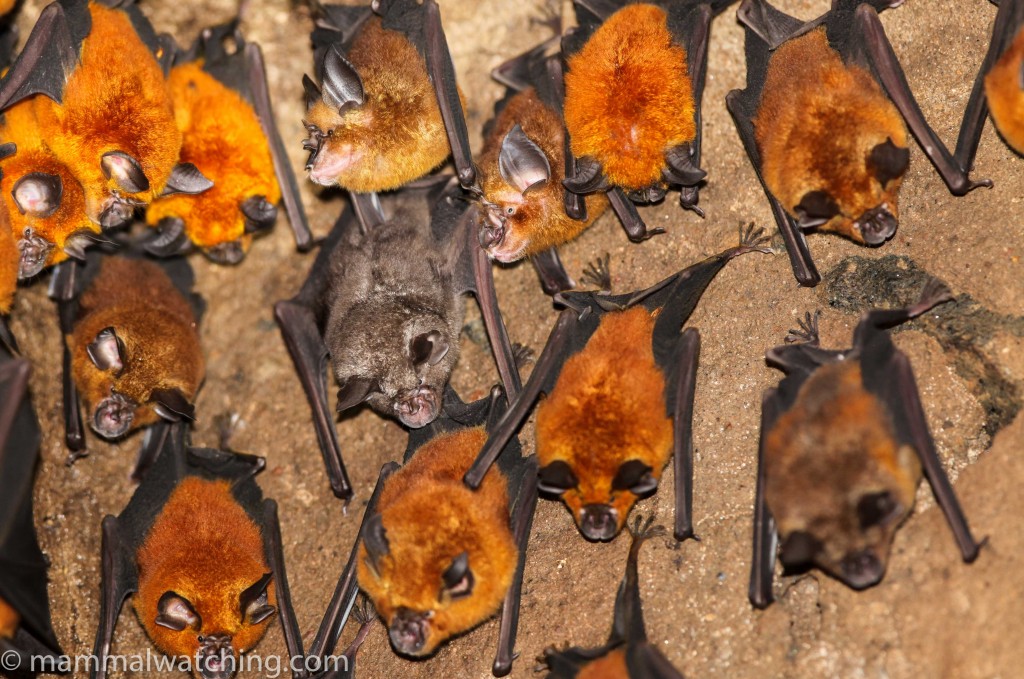
Spot the difference: red and grey Rufous Horseshoe Bats, Rhinolophus rouxii
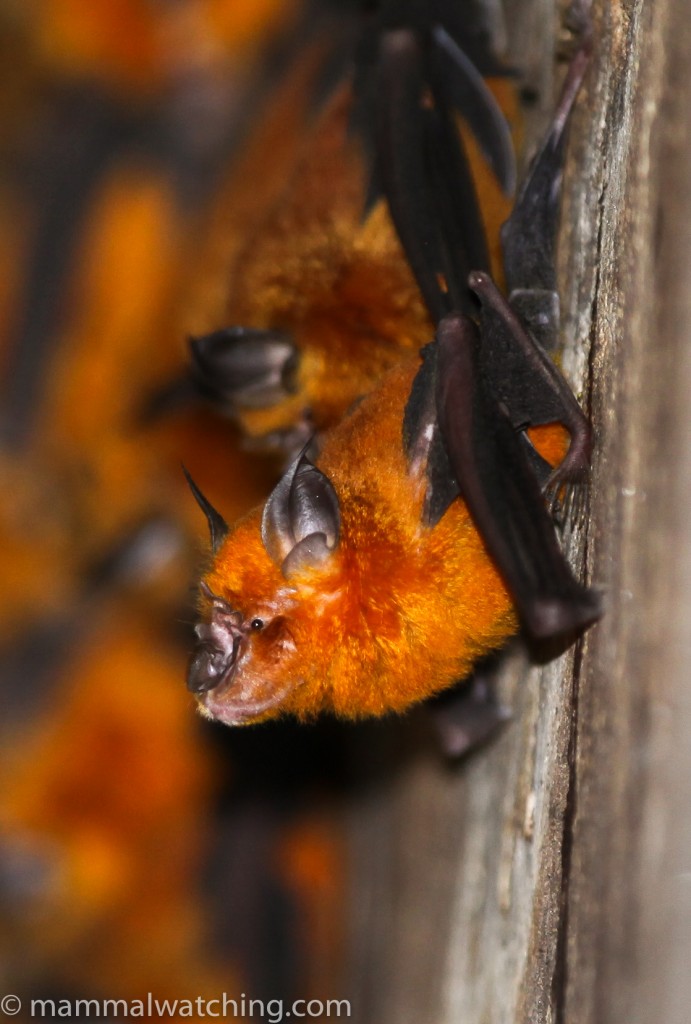
Spot the difference: red and grey Rufous Horseshoe Bats, Rhinolophus rouxii
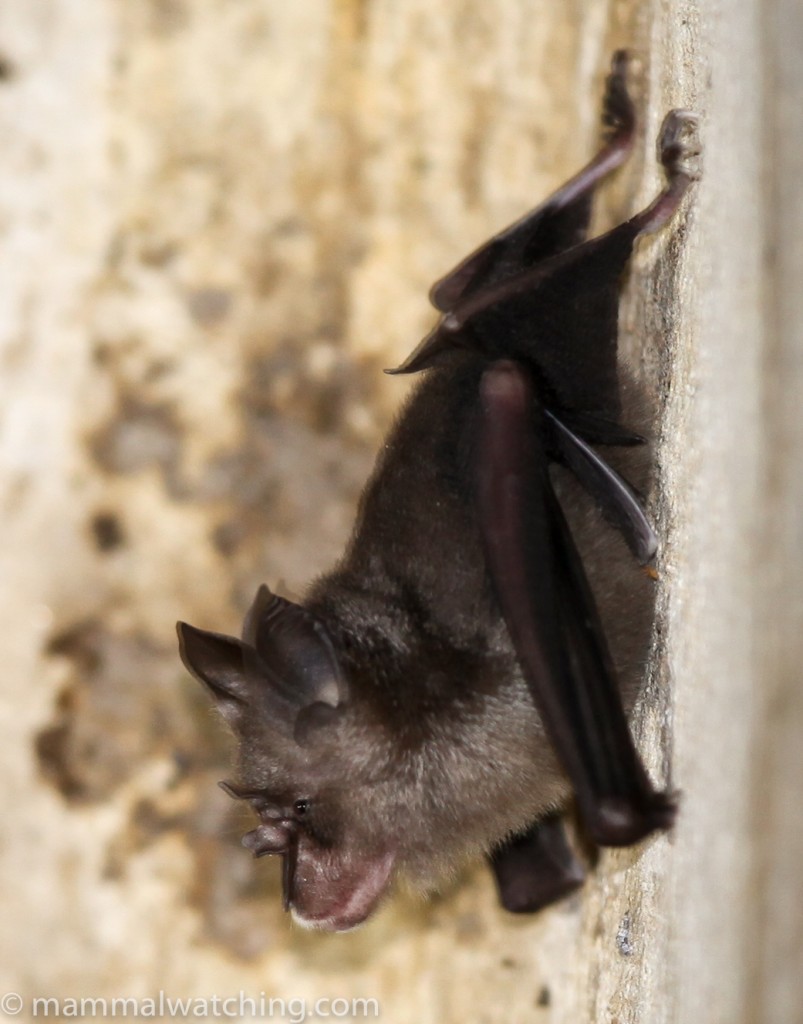
Spot the difference: red and grey Rufous Horseshoe Bats, Rhinolophus rouxii
We walked for an hour or so through the bush and saw lots of Nilgiri Langurs and Spotted Deer, old Tiger scats and heard an Indian Giant Squirrel. A Serpent Eagle, flushed from the trail, was munching on a fresh Indian Giant Flying Squirrel which it had presumably caught not long after dawn. They are big animals up close.

Indian Giant Flying Squirrel, Petaurista philippensis: Serpent Eagle breakfast
Jungle Striped Squirrels were common around the park restaurant.
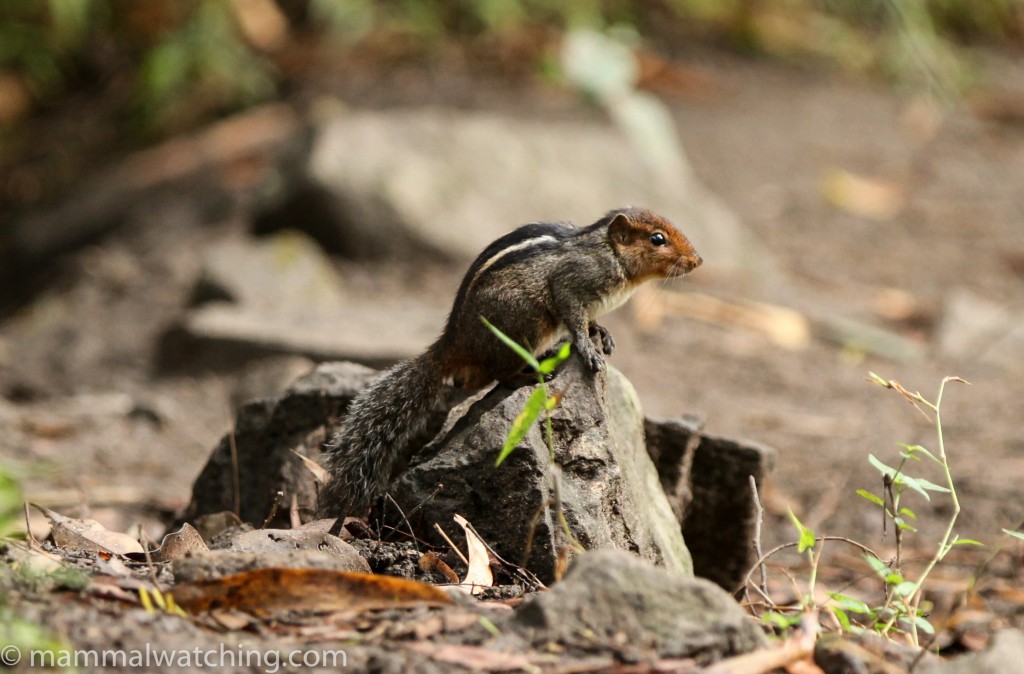
Jungle Striped Squirrel, Funambulus tristriatus
After a cup of tea we drove up the hill towards Parambikulam Village with a local guide, Shanmugam. He’s one of the park’s birding guides and reckoned we’d easily see a Dusky Striped Squirrel. He wasn’t wrong.
This is an interestingly little known species. The IUCN claim it has been recorded very few times but it is not uncommon at Parambikulam. We heard several calling – with a distinctive ‘squeaky wheel’ kind of a whistle – along the road up to the village. The squirrels apparently live in the thickets at the base of mature stands of bamboo and we heard at least three in this habitat in the space of 20 minutes. We got a brief look at one zipping around inside a thicket. They are small, shy and hard to photograph which perhaps explains the paucity of records. Plus few people have been looking I imagine.
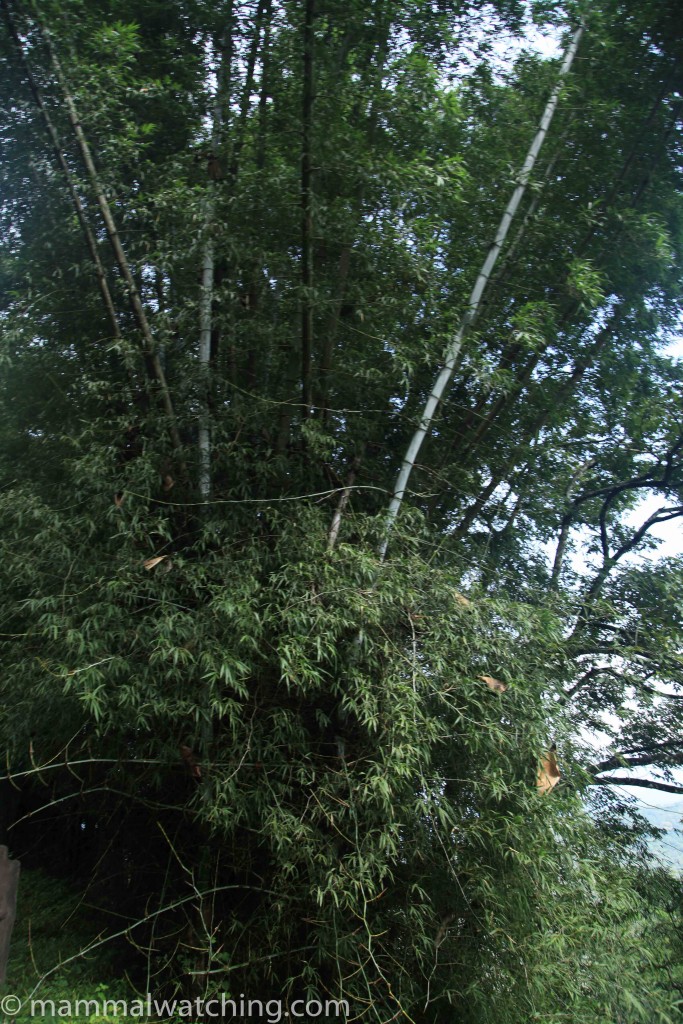
Dusky Striped Squirrel habitat
After finding the squirrel so quickly Sasi decided we ought to move to the Nellyampathy Hills, in the western buffer zone of the park for the second night as it was a good area for Indian Mouse-deer (a species much less common than its cousin in Sri Lanka). We could also take a night drive there, something prohibited in the park itself. The area is also good for Lion-tailed Macaques.
It took a couple of hours to get to the government hotel (whatever your views on privatisation and nationalisation I don’t think I’ve ever stayed in a nice government hotel…but the food at least, and as always in Kerala, was good).
We set out as soon as it got dark for what turned into an excellent four hour drive. My first Indian Mouse-deer, great views of five Indian Giant Flying Squirrels, a few Sambar, a Black-naped Hare and a prolonged look at a youngish (but still 2m long I would guess) King Cobra that was slithering back and forth trying to find an escape route from under the tree root we’d baled it up into.
We stopped for a half way break at Pakuthipalam, the tiny village Sasi grew up in and had a cup of tea while his cousin expressed considerable concern at the amount of blood stains on my trousers and the amount of blood flowing from my arms: having taken the best bits of my legs the leeches were moving to higher ground.
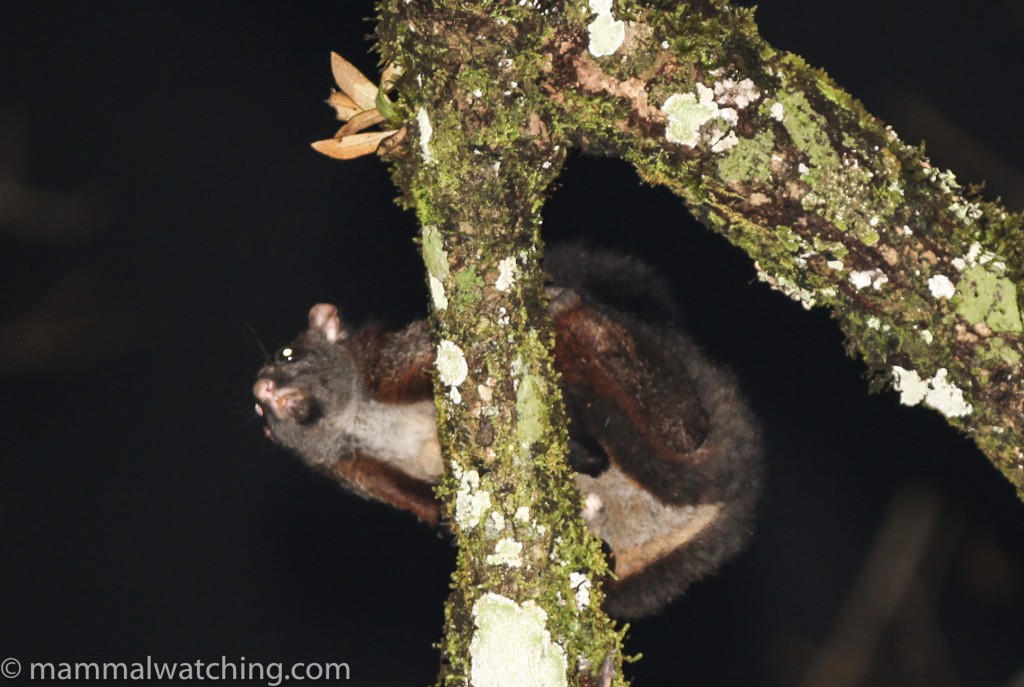
Indian Giant Flying Squirrel, Petaurista philippensis
The next morning there were Bonhote’s Mice and a Nilgri Highland Shrew in the traps, and Malabar Giant Squirrel, Malabar Red Muntjac and Bonnet Macaques around the hotel. Another top park and one that should be on every mammal watcher’s itinerary.
Wayanad & Tholpetty Wildlife Sanctuaries
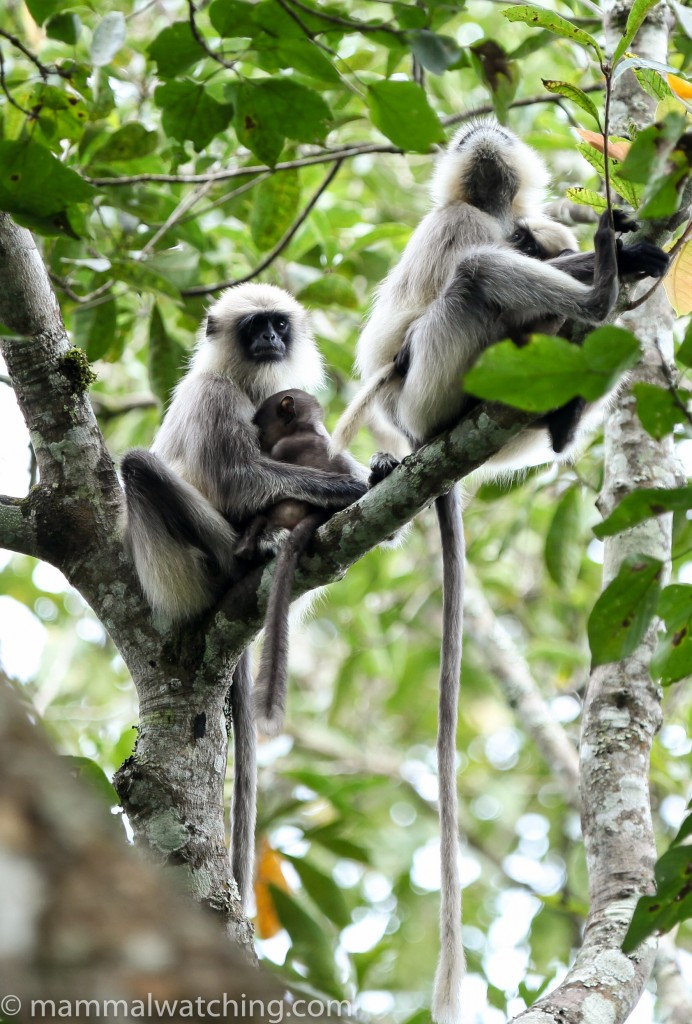
Black-footed Gray Langur, Semnopithecus hypoleucos
It took most of the day to get to Wayanad. I wanted to visit here primarily to see Black-footed Grey Langurs, one of the several species (though some people aren’t sure it is a full species) that the Hanuman Langur has been split into.
Wayanad was a convenient place to stop. It is rather more disturbed than the other parks I’d been too and more touristy too. I stayed at the Rain County resort which was more luxurious, but less enjoyable, than the other places I’d stayed: I saw my first western tourists here. A short spotlight walk along the drive to the hotel produced another Indian Giant Flying Squirrel and a small mega-bat, presumably a cynopterusspecies.
Sasi had never seen langurs near the hotel so after breakfast we decided to head to Nagerahole National Park, probably the easiest place to see some, and also en route to Bangalore, our next destination. As we got closer to Nagerahole we discovered the park is only open for a couple of hours at dusk and dawn so we decided to try nearby Tholpetty Wildlife Sanctuary. That too was shut during the middle of the day (I’ve no idea why) but there were Black-footed Grey Langurs in the trees near the park gate. Problem solved. (At the time I saw these they were classed as a different species to Southern Plains Grey Langurs, but – in 2021 – the two species are lumped even if these animals have rather different colouration to tother grey langurs).
We continued on to Bangalore for my last night. Half of Bangalore appeared to be under construction. The other half was stuck in traffic. I am not in a hurry to return.
Daroji Sloth Bear Sanctuary, Karnataka
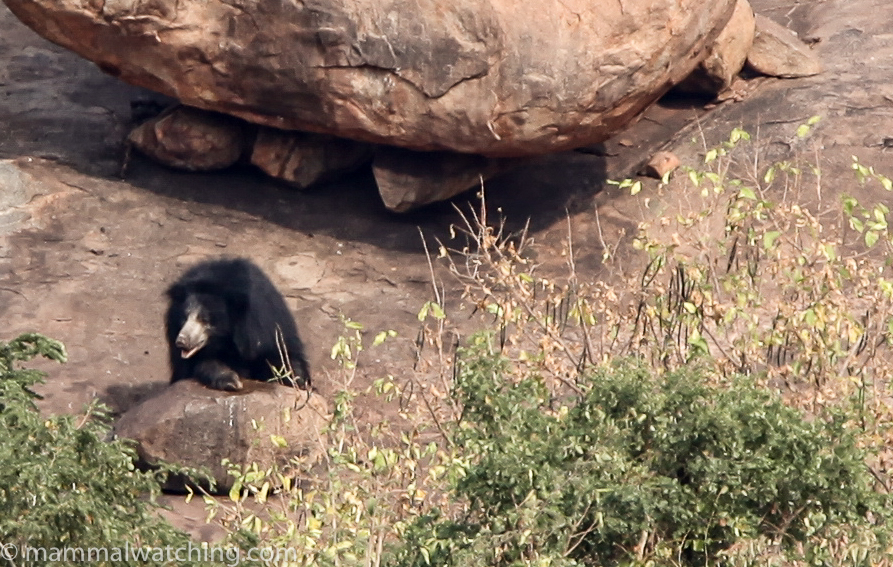
Sloth Bear, Melursus ursinus
I’d seen a Sloth Bear only once, and poorly, in Yala National Park Sri Lanka, so decided to change my schedule to spend our last day at the Daroji Sloth Bear Sanctuary, 300kms north of Bangalore. Now 300kms in India is usually a full day’s drive but once you escape Bangalore traffic it is a fast three lane toll road for the first 200km which took just five hours to reach Hospet. Our driver certainly relished the chance to drive on a fast road. The man has no fear and our trip made Death Race 2000 look like Driving Miss Daisy. But we survived. And, after some lunch, and a local metal shop repaired my bear-damaged traps, we drove the last 26 km to the sanctuary.
There have always been Sloth Bear at Daroji but in1994 the community decided to set up a park and put a wall around – and revegetate – some good habitat. Visitors head to a watchtower overlooking some rocks where food is put out each afternoon, I think because it makes the bears easier to watch rather than because they need the food.
The park opens at 13.30 and shuts at 18.00. We arrived at 14.15 and had to wait for about 10 minutes before a mother and cubs came trotting down the rocky hillside for a late lunch. They mooched around for 45 minutes before one of the staff’s dogs turned up for a feed too and the bears trotted back to their cave. There was a Three-lined Palm Squirrel here too, and I think I saw a Wild Boar briefly. I’ve heard reports of Indian Pangolins in the park and the habitat looked good. We set off back to Bangalore in the hope we could drive a little more slowly to make my flight. We made the flight. We drove no less quickly.
So over 40 species including just about all of my targets. I’d normally have tried to take the trip a bit more quickly but the extra three or four days paid off to make a very enjoyable and successful 12 days. This was largely thanks to Sasi’s great efforts. A big thanks to him and to Anil at North West for organising it and looking after me perfectly.
Stuff I Missed
I was focusing, as usual, on seeing species I hadn’t seen before, particularly the Western Ghat endemics. So I made no effort to see Tigers or several other nice species such as Dholes or Slender Lorises on this trip. That said I’d have been extremely lucky to have seen a Tiger even if I had been trying: they are around but much harder to see that in parks like Bandhavgarh. I was very pleased to see all of the larger than rat-sized endemics other than the Nilgiri Marten (always a long shot), the Malabar Hedgehog and the Malabar Civet (which hasn’t been recorded in 20 years).
Nilgiri Marten are probably not as hard to see as people would have your believe. Most people I spoke to who lived around Munnar had seen them occasionally and I think if you spent a week up there driving the road from Munnar to Watavada you’d have a reasonable chance. The bad news is that they are rare. The good news is that if you see one they seem both fearless and curious and may well walk up to you.
Malabar Civet: I didn’t even ask about this species. It may well be extinct.
Malabar Hedgehog: strangely only one person said he’d seen hedgehogs and that was at Top Station where he reckoned they would often come to the restaurant looking for scraps of food. I’m not sure if that’s accurate.
Travancore Flying Squirrel: the only place people knew about these was Thatekkad where we allegedly heard several. I imagine they would have been present in some of the other parks (especially Chinnar which was lower in altitude than the other places I visited) but there is probably very little spotlighting done in those places.
I was also keeping an eye out for Fishing Cats (no one reported seeing these), Indian Pangolins (they are around but as always very hard to see), Malabar Spiny Dormouse (they had a stuffed one in Thatekkad that they had found after a fire but you’d realistically only have much chance to see one in a trap I think), Madras Treeshrew (no one I spoke to had seen one of these) and White-tailed Woodrats which are probably common and I may even have seen one or two in Chinnar on the night drive but I can’t be sure.
Trip List
Lifers prefixed with an F
Indian Hare Lepus nigricollis
F Indian Giant Squirrel Ratufa indica
Sri Lankan Giant Squirrel Ratufa macroura
Indian Palm Squirrel Funambulus palmarum
F Dusky Palm Squirrel Funambulus sublineatus
F Jungle Palm Squirrel Funambulus tristriatus
Indian Giant Flying Squirrel Petaurista philippensis
F Bonhote’s Mouse Mus famulus
House Mouse Mus musculus
House Rat (Black Rat) Rattus rattus
F Jerdon’s Palm Civet Paradoxurus jerdoni
Indian Gray Mongoose Herpestes edwardsii
Ruddy Mongoose Herpestes smithii
Sloth Bear Melursus ursinus
F Nilgri Highland Shrew Suncus niger
Asian House Shrew Suncus murinus
F Leschenault’s Rousette Rousettus leschenaulti
Indian Flying Fox Pteropus medius
Black-bearded Tomb Bat Taphozous melanopogon
F Greater False Vampire Bat Lyroderma lyra
Rufous Horseshoe Bat Rhinolophus rouxii
F Fulvous Roundleaf Bat Hipposideros fulvus
Schneider’s Roundleaf Bat Hipposideros speoris
Greater Asiatic Yellow Bat Scotophilus heathi
Black-footed Gray Langur Semnopithecus hypoleucos
Tufted Gray Langur Semnopithecus priam
F Hooded Leaf Monkey (Nilgiri Langur) Trachypithecus johnii
Rhesus Macaque Macaca mulatta
F Bonnet Macaque Macaca radiata
F Lion-tailed Macaque Macaca silenus
Eurasian Wild Boar Sus scrofa
F Indian Chevrotain Moschiola indica
Malabar Red Muntjac Muntiacus malabaricus
Sambar Cervus unicolor
Chital (Axis Deer) Axis axis
F Nilgiri Tahr Hemitragus hylocrius
Gaur Bos gaurus
Asian Elephant Elephas maximus
39 species
Itinerary
7 October: arrive Mumbai at 2 a.m. and the day at Elephanta and Kanheri Caves
8 October: Fly to Kochi and drive to Thatekkad Bird Sanctuary
9 October: Top Slip
10 October: Top Slip
11 October: to Chinnar Wildlife Sanctuary
12 October: to Valparai
13 October: Valparai
14 October: to Parambikulam Tiger Reserve
15 October: Parambikulam Tiger Reserve (Nellyampathy Hills)
16 October: to Wayanad
17 October: to Bangalore via Tholpetty Wildlife Sanctuary
18 October: Daroji Sloth Bear Sanctuary and late night flight from Bangalore to Paris
4 Comments
Leave a Reply
You must be logged in to post a comment.


Rob Jansen
Nice Jon! Do you have direct contacts with Sasi?